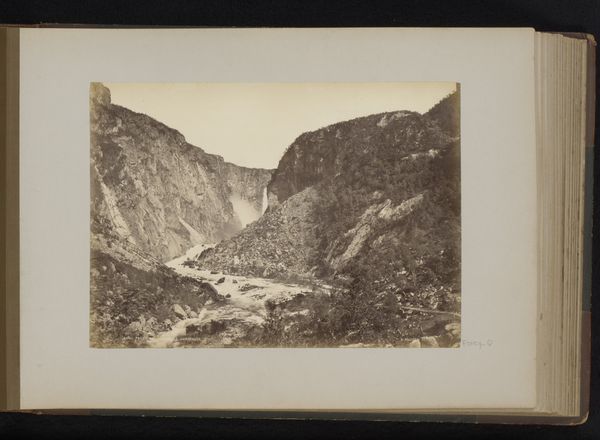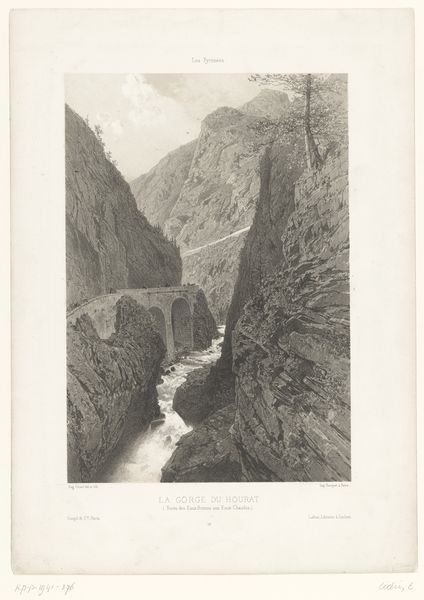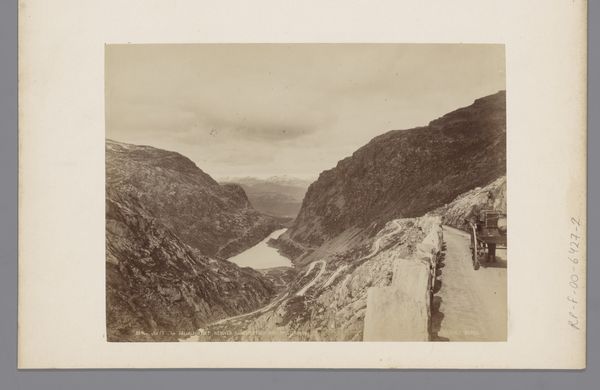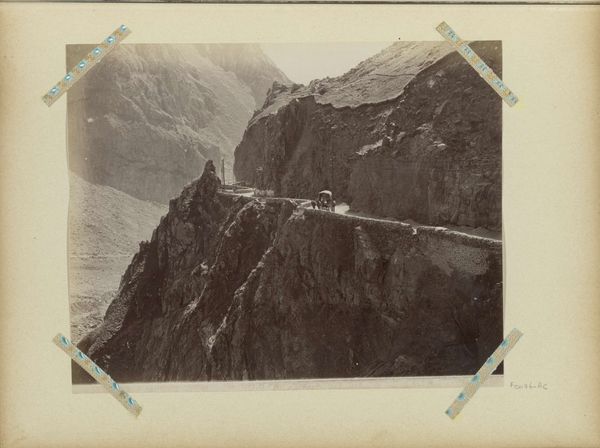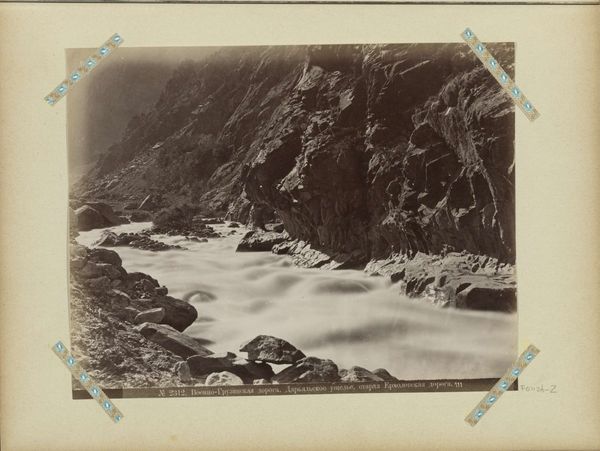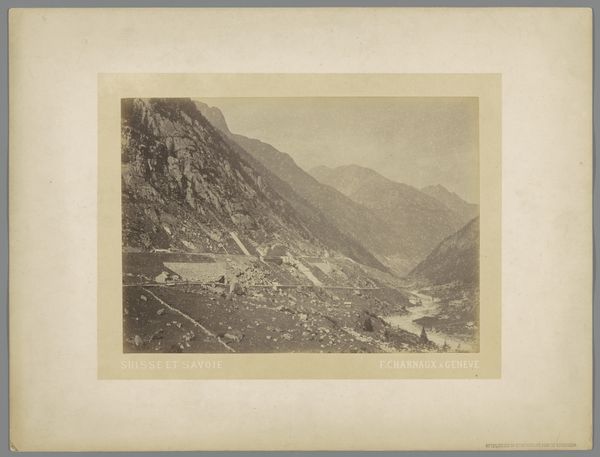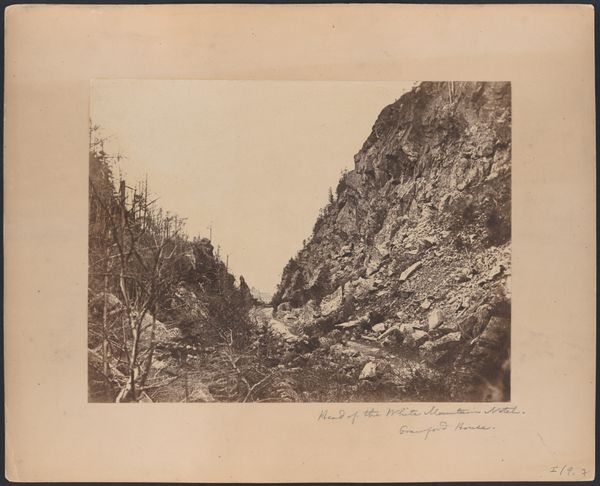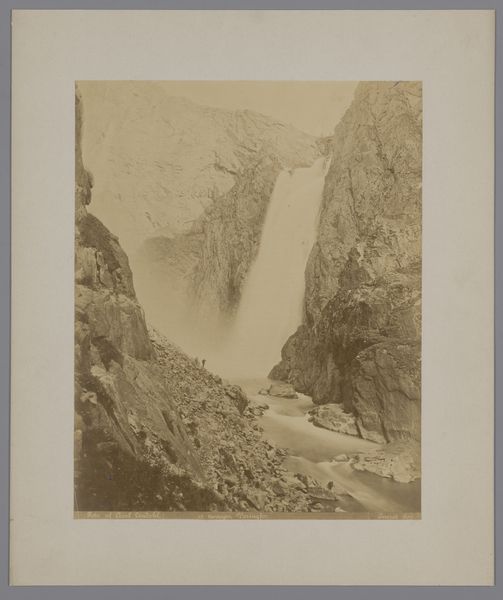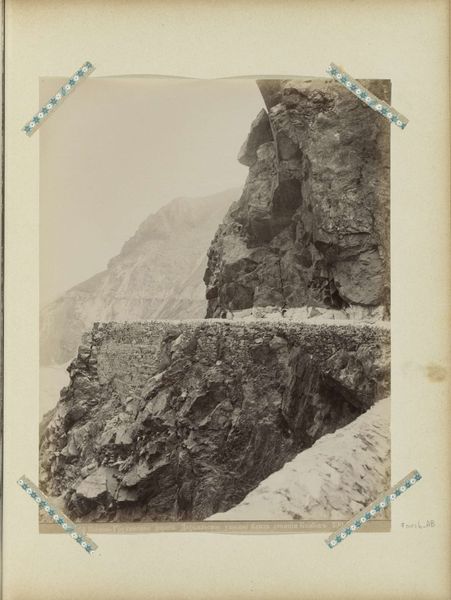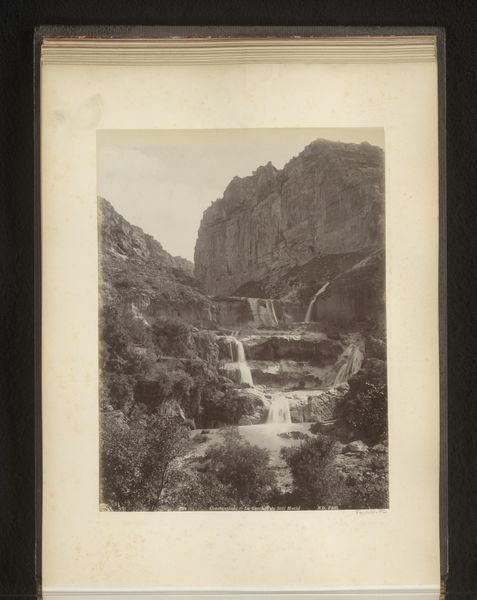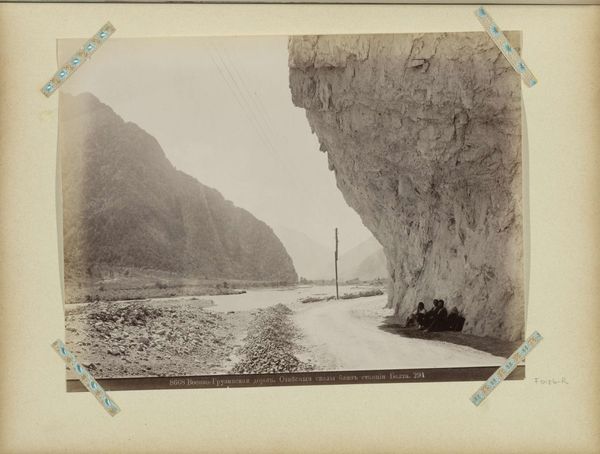
print, photography, gelatin-silver-print
#
pictorialism
# print
#
landscape
#
photography
#
gelatin-silver-print
#
realism
Dimensions: height 138 mm, width 181 mm, height 304 mm, width 362 mm
Copyright: Rijks Museum: Open Domain
Curator: This gelatin silver print is titled "Hellands Hotel, Parti fra Gudvangen, Sogn, Noorwegen" and it comes to us from the lens of Knud Knudsen, circa 1880 to 1900. Editor: It has such a melancholic feel. That pale, silvery light gives everything this sense of stillness, almost like a stage set. What's the dominant feeling for you? Curator: It speaks of transition to me. Hotels occupy such a curious space in our minds and in our social fabric. They are emblems of arrivals, departures, meetings and temporary shelters. Editor: Absolutely. And thinking materially, the very nature of a hotel, its bricks and mortar and furnishings, signify both permanence and transient labor, made and consumed by various people, but belonging fully to none. That building sitting against the immense geological timescales in those mountains really underlines the point, doesn't it? Curator: I see a symbol of humanity framed by a very different type of time. Look at the compositional positioning – a thin path cuts right through, leading the eye inexorably toward the solid structure. It becomes almost archetypal, doesn’t it, that yearning for both safety and adventure? Editor: True, and how interesting that Knudsen chose photography – with its chemical processes and inherent reproducibility – to document this landscape. It democratized image-making but, ironically, captured an exclusive kind of leisure. Who was staying at Hellands Hotel in those days? What sort of economic background were they from? Curator: Photography during that period attempted to reconcile a seemingly scientific medium with artistic effect and the sublime. What results from the tension, of course, is an image imbued with memory. It seems familiar but slightly haunting, too. Editor: I find myself considering who actually processed this gelatin-silver print and wondering where their fingerprints are. These details root us in the actual material existence of both image and landscape. It's a document of travel, but equally, it documents industrial process. Curator: That gives the image such interesting depth to contemplate how symbols of place and home have been impacted by our own interventions. Editor: For me, I’ll continue thinking about labor. Who took the photo, who printed the photo, who laid the stones in the road – who benefits from these landscape views and where are we on the continuum?
Comments
No comments
Be the first to comment and join the conversation on the ultimate creative platform.

